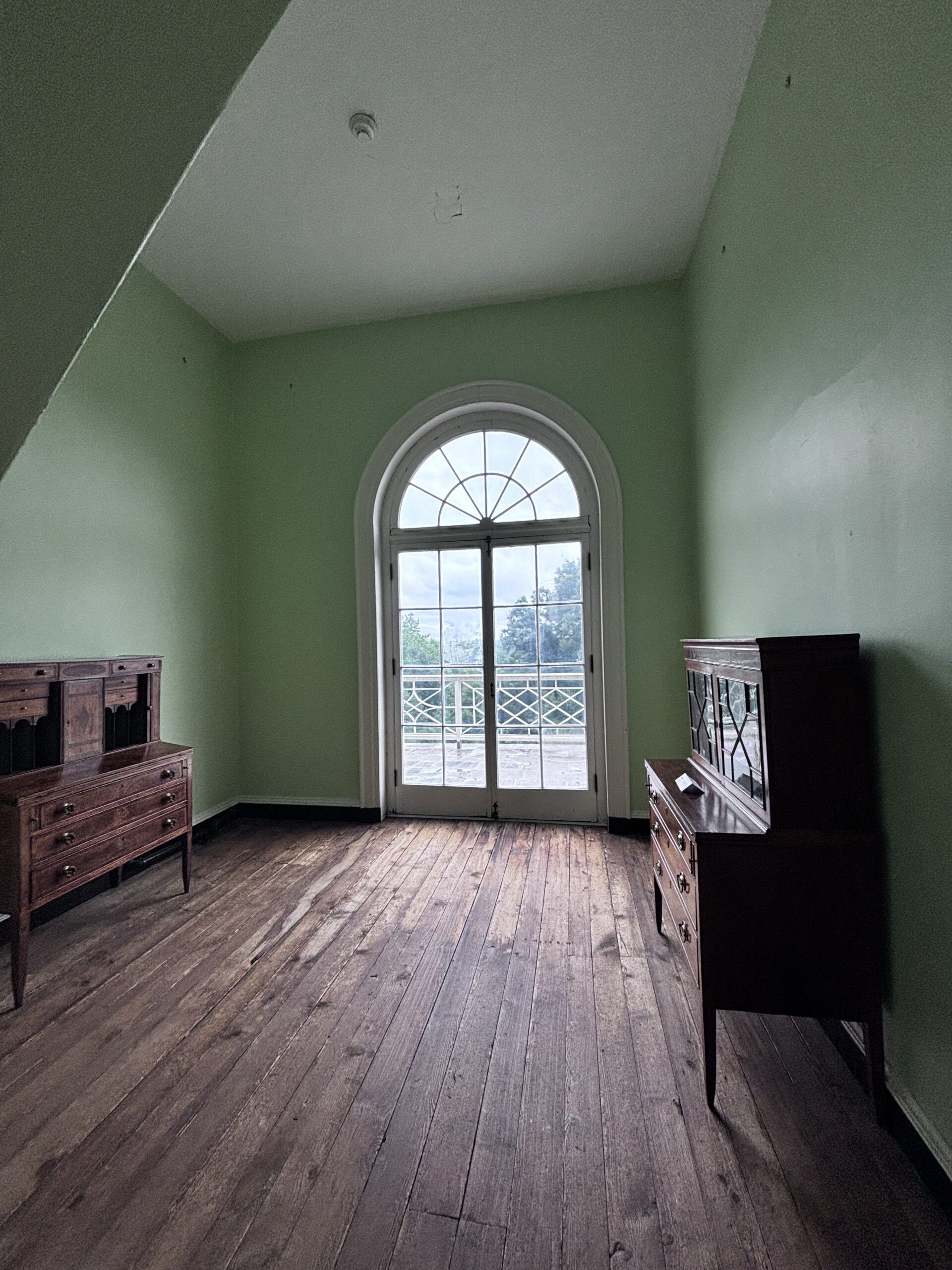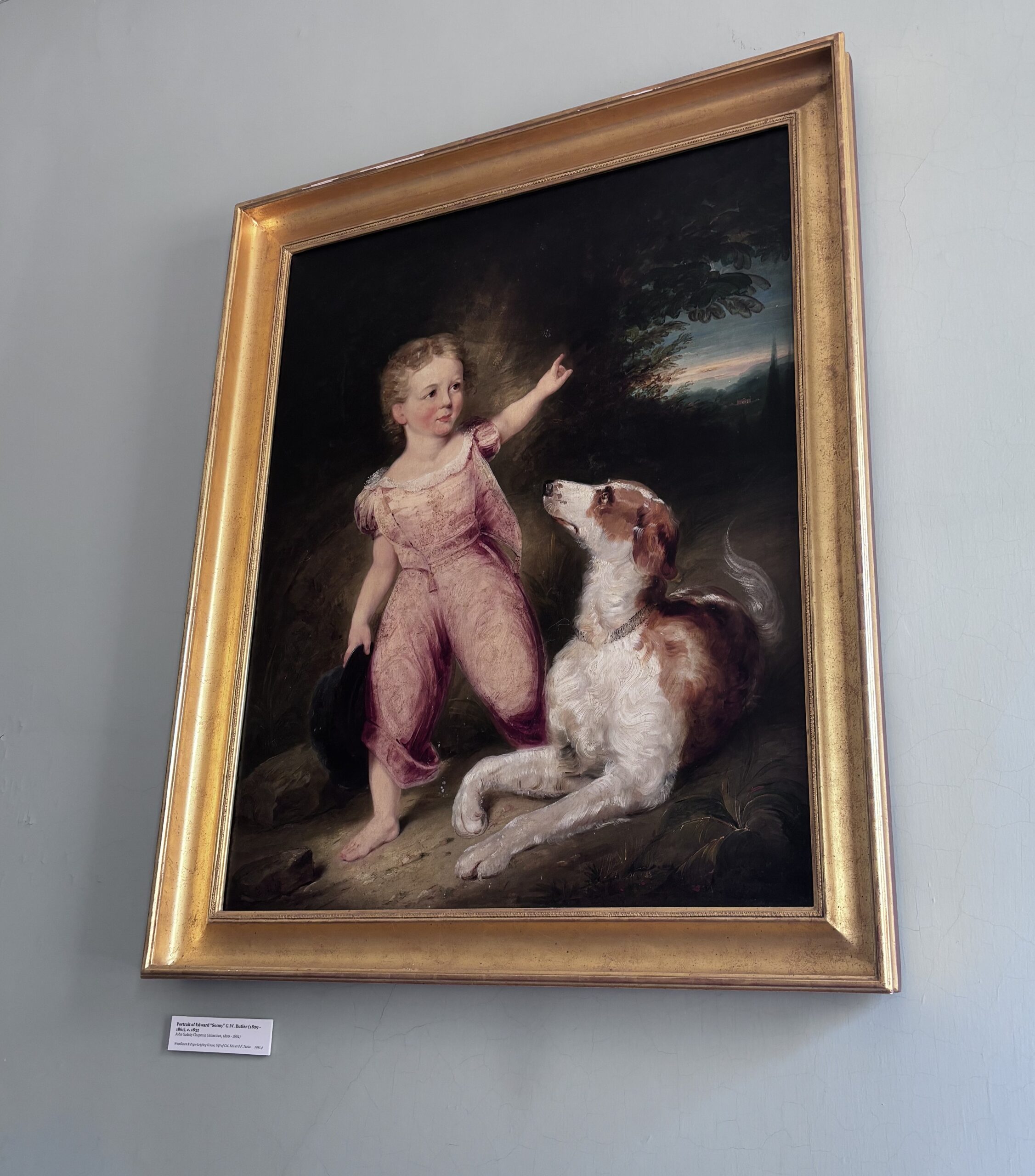Hear From the Residents
August 14, 2024
Summer Writer-In-Residence Bex Pachl: "Bring forth all the facts: the legacy of George Washington at Woodlawn"
Bex Pachl is the fourth writer of the Summer 2024 cohort to spend a week onsite participating in our local residency program at Northern Virginia’s Woodlawn & Pope-Leighey House and Arcadia Center for Sustainable Food and Agriculture. Our summer writers-in-residence focus their weeks on-site exploring ways to rediscover and re-purpose place and place histories, and use writing as a means to build community, to bring awareness to critical social and environmental issues, and as a creative force of empowerment.
Bex Pachl (they/them) is an emerging nonfiction writer from Colorado. They are an incoming Creative Nonfiction MFA Candidate and Graduate Teaching Assistant at George Mason University. In their writing, Bex connects public, historical landscapes to deeply personal themes, exploring gender, gendered violence, identity and family. Bex earned their B.A. in Sociology from Wellesley College. They reside in Washington, DC.
I begin with the windows.
Windows of unique shapes and patterns define Woodlawn, or at least they defined it for me. On the second floor of Woodlawn, there’s a small, nearly empty room with a few desks tucked in towards the walls. The walls are a soft green, like a handful of seafoam. Inside, there’s a large glass door, with a window pane shaped as a half-circle on top, making an arch-shaped opening for light to seep through.
When people think of the Woodlawn plantation, they think of George Washington. Despite never seeing the house built, this land was part of George Washington’s original acreage for his Mount Vernon plantation.
There’s more to Woodlawn than its windows– there’s also more to Woodlawn than George Washington. Perhaps there is something here to investigate, in our desire to turn towards George Washington, the way I am returning again and again to the seafoam green room to see the light as it pours in at certain times of day.
Interpretation is like a constant dance, a process in motion, like light streaming in through a window. What happens when that interpretation is made harder, nearly impossible? We have precious records of the enslaved people of African descent who lived and worked on Woodlawn, building their lives in the face of precarity and violence, but so much of their lives allude us, even today, even still.
Woodlawn remains pristine and preserved, but the quarters where these enslaved people lived– their tools, their places of worship, their testimonies– are mostly gone, vanished in the rushing river of history. And yet, when people think of the Woodlawn plantation, they think of George Washington.
In the room where I write, a small window, shaped like a singular eye, wide open, looks out at the original front of the house, over the hill to a sea of trees which conceals nearby Mount Vernon. Towards the end of his life, George Washington wrote: “The unfortunate condition of the persons, whose labour in part I employed, has been the only unavoidable subject of regret.” (source)
George Washington’s legacy is everywhere, but how we interpret and redefine his legacy is up to us. His power, prestige, and legacy are a machine and the lives of enslaved Black people turn the cogs, sacrificed on the altar of its efficiency.
In one of the paintings that hangs in Woodlawn, a young boy is pictured walking down a dirt path with a dog at his side, pointing backwards behind him towards a deepening sunset. The boy in this picture is Edward “Sonny” George Washington Butler, a descendant of George Washington who later fights for the Confederacy and dies in battle.
In the seafoam green room, the window has a design that makes the half circle appear like the sun, lines jutting out like sunbeams. In the portrait of young Sonny, if you look closely towards where he points, there in the midst of the deepening sunset is a house. The house he is pointing to is Woodlawn.
Perhaps all roads lead back to Woodlawn, and from there back to George Washington. If we are going to interpret, let us bring forth all of the facts– all of them– about the misery, the violence, the way George Washington could have done more but did not, built a nation out of ideas but could not, would not, see the shared humanity of those who laid its bricks.
I see the windows. I see the house. I see the bricks, and the trees, and the absences, which speak too. I hold my imperfect gaze, for just one moment longer.
Recent Posts
Hannah Finnie: Summer 2024 Resident
Victoria Newton Ford: Summer 2023 Resident
Subscribe to Our Newsletter
Sign up now to get the latest
news & updates from us.




